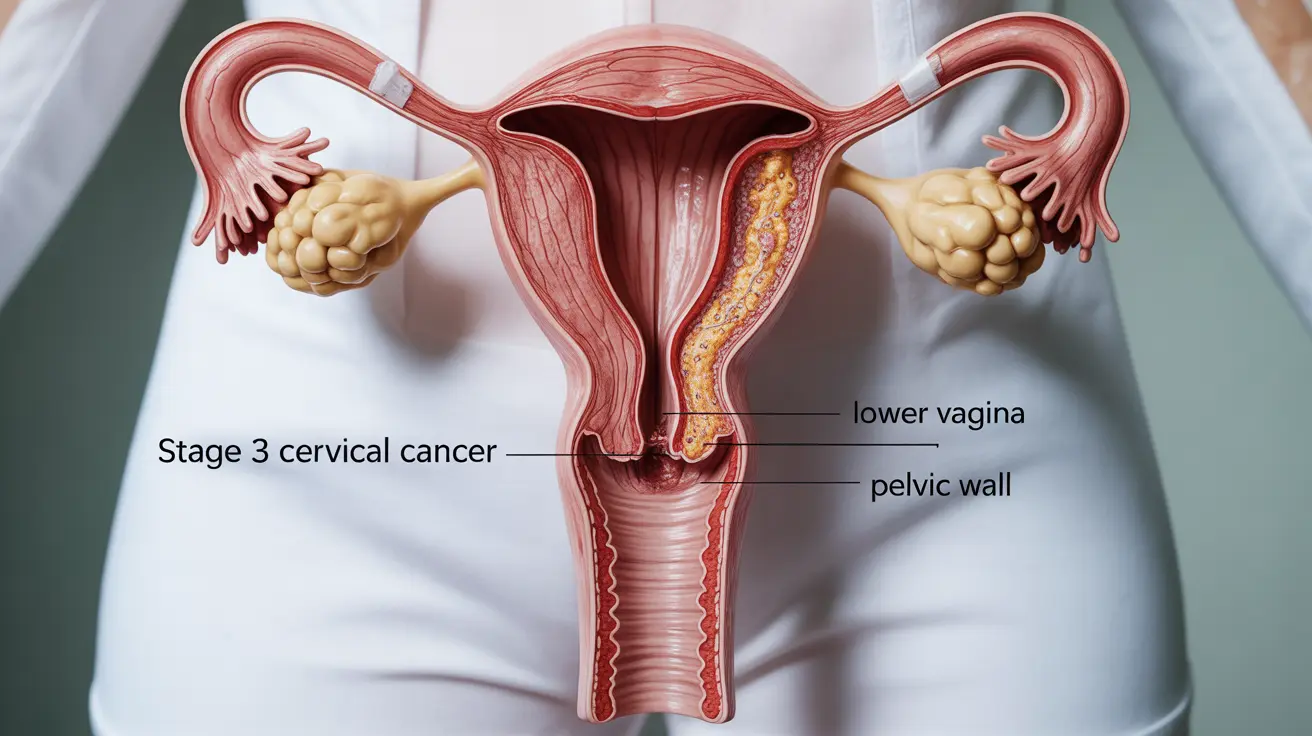Stage 3 cervical cancer represents an advanced phase of this serious gynecological condition, where the cancer has spread beyond the cervix and uterus. Understanding the symptoms, treatment options, and outlook for this stage is crucial for both patients and their loved ones. This comprehensive guide explores what you need to know about stage 3 cervical cancer.
Key Symptoms of Stage 3 Cervical Cancer
At stage 3, cervical cancer typically presents with more noticeable and severe symptoms compared to earlier stages. Common signs include:
- Irregular vaginal bleeding
- Pelvic pain
- Back pain
- Leg pain or swelling
- Unusual vaginal discharge
- Weight loss
- Fatigue
These symptoms often become more pronounced as the disease progresses, making it essential to seek immediate medical attention if you experience any combination of these signs.
Understanding Disease Progression
Stage 3 cervical cancer is characterized by the spread of cancer cells beyond the cervix and upper vagina. At this stage, the cancer may have:
- Extended to the lower vagina
- Invaded the pelvic wall
- Affected nearby lymph nodes
- Caused kidney complications due to ureter compression
Treatment Approaches
Combined Therapy Options
Treatment for stage 3 cervical cancer typically involves a multi-modal approach, combining different therapeutic strategies:
- Concurrent chemoradiation
- External beam radiation therapy
- Internal radiation (brachytherapy)
- Targeted therapy
- Immunotherapy in specific cases
Managing Side Effects
Treatment-related side effects require careful management and may include:
- Fatigue
- Digestive issues
- Skin reactions
- Changes in blood counts
- Temporary or permanent fertility impacts
Impact on Daily Life
Stage 3 cervical cancer can significantly affect various aspects of daily living, including:
- Physical mobility
- Sexual health
- Emotional wellbeing
- Work capacity
- Social relationships
Monitoring and Follow-up Care
Regular monitoring is essential during and after treatment, involving:
- Scheduled imaging tests
- Blood work
- Physical examinations
- Symptom management
- Quality of life assessments
Frequently Asked Questions
What are the common symptoms of stage 3 cervical cancer to watch for?
Common symptoms include irregular vaginal bleeding, pelvic pain, back pain, leg swelling, unusual vaginal discharge, unexplained weight loss, and fatigue. These symptoms are typically more severe than in earlier stages and may significantly impact daily activities.
How is stage 3 cervical cancer treated and what are the main treatment options?
Stage 3 cervical cancer is primarily treated with a combination of chemotherapy and radiation therapy (chemoradiation). This may include external beam radiation, internal radiation (brachytherapy), and systematic chemotherapy. Treatment plans are tailored to each patient's specific situation.
Can stage 3 cervical cancer cause urinary and bowel problems?
Yes, stage 3 cervical cancer can cause urinary and bowel problems due to the tumor's size and location. These may include difficulty urinating, frequent urination, constipation, or diarrhea. The cancer may also compress the ureters, potentially affecting kidney function.
What is the survival rate and prognosis for someone diagnosed with stage 3 cervical cancer?
The five-year survival rate for stage 3 cervical cancer varies depending on several factors, including the specific substage, treatment response, and overall health. While the prognosis is more challenging than earlier stages, many patients respond well to treatment, especially with current therapeutic advances.
How does stage 3 cervical cancer differ from earlier stages in terms of symptoms and spread?
Stage 3 cervical cancer differs from earlier stages primarily in its extent of spread and symptom severity. While early-stage cancer is typically confined to the cervix, stage 3 involves spread to the lower vagina and/or pelvic wall. Symptoms are usually more pronounced and may include systemic effects like weight loss and fatigue, unlike earlier stages where symptoms might be minimal or absent.




